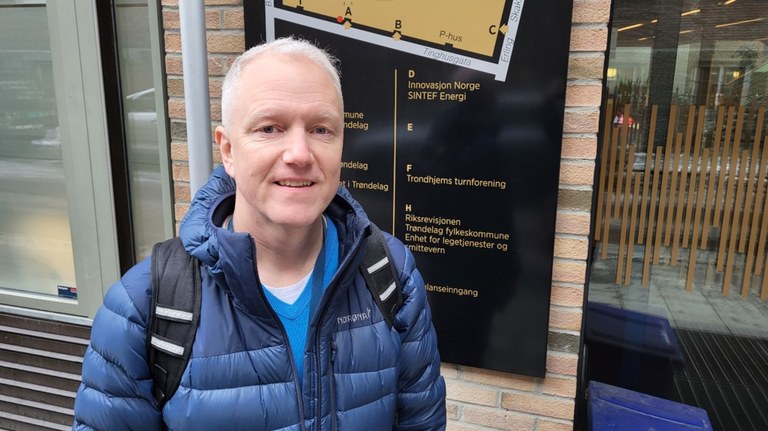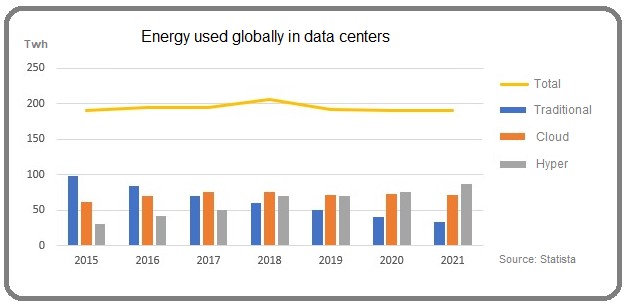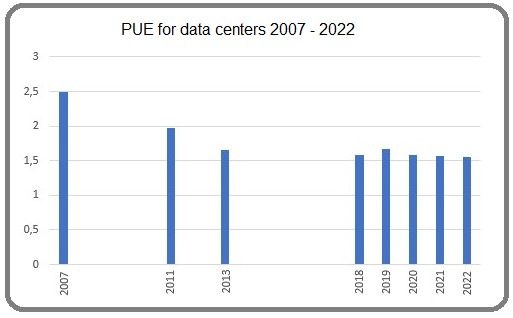"Saving the environment" with liquid-cooled data centres
Global data giants are looking to countries with a lot of renewable energy and high security levels to build environmentally friendly data centres. But as electricity prices skyrocket, they are also being accused of taking energy needed in other sectors.
The SINTEF research foundation in Trondheim has been looking into data centres and the environment and now launches an alternative model for data storage in very small, liquid-cooled data centres that can be positioned near district heating facilities.
The new and old technology differs a lot, according to Petter E. Røkke, research director at SINTEF Energi AS in Trondheim, and head of the HighEFF research centre.

Petter E. Røkke is research director at SINTEF Energi AS in Trondheim and head of the HighEFF research centre.
He points out that Norway is an attractive place for international data centre companies because of the access to clean Norwegian energy.
Excess heat
“Data centres primarily use energy for cooling, in particular air cooling of data processors and the like. This produces a lot of excess heat which is difficult to use because of its low temperature – typically 40 to 50 degrees Celcius,” he says.
“Liquid-cooled systems create excess heat with a higher temperature which means it is easier to use its potential in for instance district heating systems. This is more expensive, however, so using air cooling is simpler and cheaper.”
“The excess heat can also be used, for instance, to heat greenhouses that need stable temperatures year-round, stable and dry air. Nurseries have been offered government incentives to transition from fossil fuels to more environmentally friendly electric energy,” he explains.
“Greenhouses have had to shut down due to high electricity prices. Data centres could therefore be a good match for fruit and vegetable greenhouses,” explains Røkke, referring to the SINTEF blog “This is how we reduce data centres carbon footprint”.
Liquid cooling
A data centre usually contains server racks in corridors. They also contain systems for cooling and ventilation, extra electricity supplies, and systems for security, fire safety and monitoring. In other words, a lot of equipment that produces heat.
The company Green Edge Compute AS has just built a data centre using liquid cooling.
“We build very small liquid-cooled data centres using our own equipment from which we can hire out capacity," explains founder and CCO Patrik Hagelin.
“Our goal is to figure out how to build the world’s most sustainable data centre while also taking into account future needs for technology.”
The company was founded in 2017 and has built a pilot data centre in Trondheim.
 “This is liquid-cooled. This allows for a high-density construction because liquid cooling is more efficient than air cooling,” says Hagelin.
“This is liquid-cooled. This allows for a high-density construction because liquid cooling is more efficient than air cooling,” says Hagelin.
“We can fit far more equipment with liquid cooling into one rack, and this takes up very little space. The liquid cooling creates heat which we reuse in the city’s district heating system,” he explains.
In other words, people can take a hot shower with water heated by the data centre.
Cuts emissions
Hagelin explains that liquid cooling reduces CO2 emissions.
“These are high-tech data centres that save money, heat the city and cut a lot of CO2,” he says.
The City of Trondheim will soon start using the Green Edge Compute data centre, which is situated in the cellar of an office building.
“We choose locations that are as close as possible to district heating. This one is 100 square metres and the data centre has a capacity of 2MW. We don’t build massive installations and this is the biggest difference. We can reuse up to 90 per cent of the energy we put in. The warm water that comes out has a temperature of between 50 and 60 degrees Celcius,” explains Hagelin.
“The data centre uses 40 per cent less energy because it is not using airconditioning for cooling. Our 100 square metres centre allows us to cut more than 1,500 tonnes of CO2 annually compared to other 2MW capacity centres.”
“SINTEF tested the pilot and published a report last autumn. We will keep building and start to migrate clients now. Our goal is to manage with just a few employees, perhaps 10 people. They will be tasked with looking after all of our data centres,” says Hagelin.
“The idea is to run several local centres from one common operation central, although we also have several decentralised data centres.”
- 200 billion Twh energy use
-

The world's data centres use around 200 billion terawatt hours of electricity each year. The use has been constant but there has been a big change in the types of data centres, which are divided into traditional, cloud and hybrid storage.
- More efficient data centres but slow change
-
Other places besides Trondheim are testing out liquid-cooled data centres too. The US Department of Energy (DOE ) handed out 40 million dollars to 15 research projects on 9 May this year.
Data centres spend 2 per cent of the total global electricity consumption. 40 per cent of this is spent on cooling, on average.

Data centre efficiency is measured in Power Usage Effectiveness (PUE). A PUE of 2.0 means for each watt spent running the servers where data is stored, one watt is being used for cooling. The goal is to get as close to a PUE of 1.0 as possible. Today, the figure for data centres globally is 1.55 according to Statista.
 Follow us on Facebook
Follow us on Facebook
